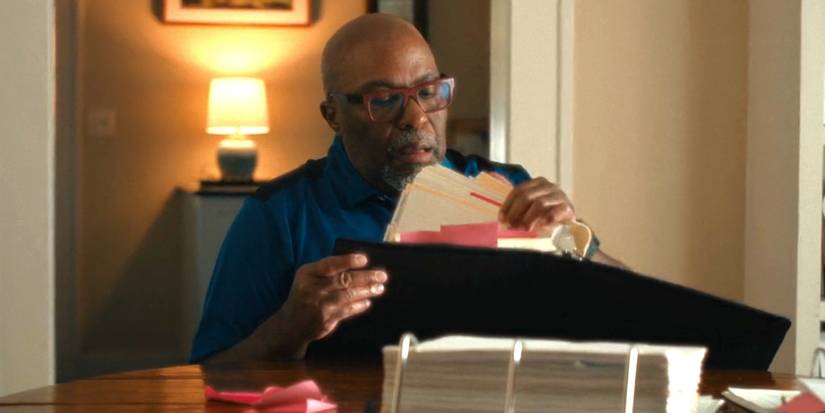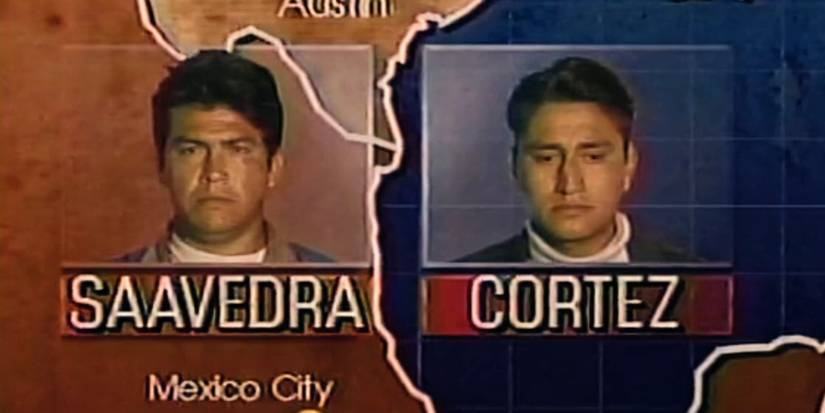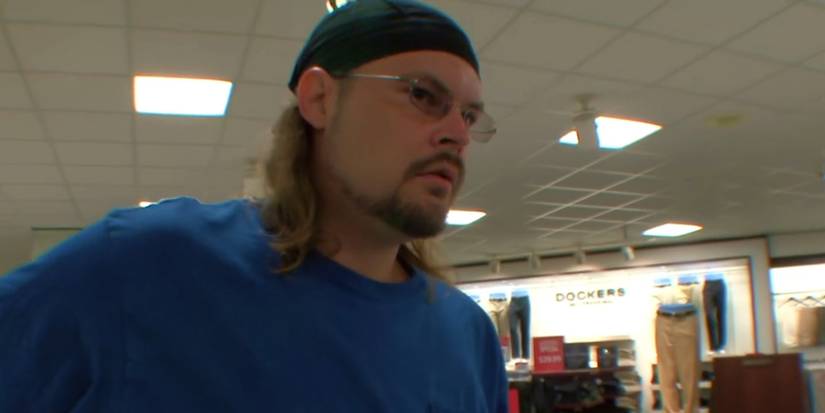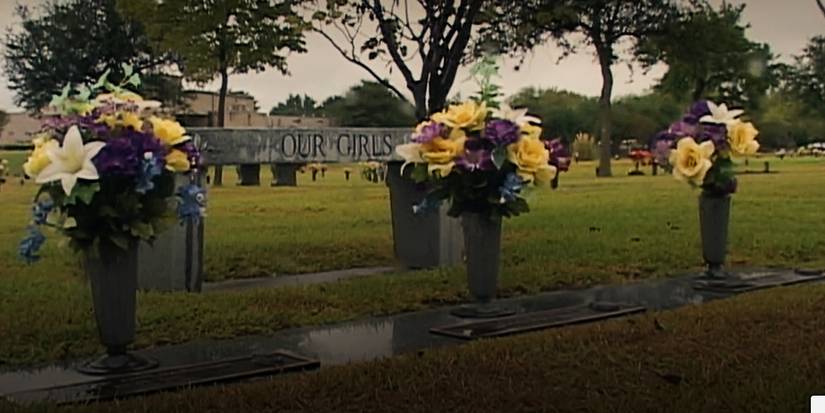This article discusses the brutal rape and murder of four teenage girls. Some facts of the case may be disturbing to readers. Please proceed with caution.
HBO Max’s documentary The Yogurt Shop Murders presents different perspectives on the tragic murders, but they still remain unsolved almost 34 years later. Over the years, documentarians have re-examined numerous true crime cases, leading to genuinely scary crime documentaries. The 2025 HBO docuseries The Yogurt Shop Murders is one of the hardest to stomach, given the disturbing nature of the crimes.
On December 5, 1991, two 17-year-old girls named Jennifer Harbison and Eliza Thomas were closing up the I Can’t Believe It’s Yogurt! shop in Austin, Texas after their shift. Jennifer’s 15-year-old sister, Sarah Harbison, and Sarah’s 14-year-old friend, Amy Ayers, were waiting with them to get a ride home. An unknown murderer/s entered the shop and attacked them.
The four teen girls were bound, gagged, raped, and shot in the back of the head. Then, the attackers lit the shop on fire and left. HBO Max’s true crime series delves into the horrific crime and its lasting impact on the families. Unfortunately, three decades later, the case remains cold, with many factors contributing to its unsolved status.
The Yogurt Shop Murders Had Minimal Evidence To Work With
One of the biggest problems that detectives face when it comes to solving the 33-year-old cold case is the minimal amount of evidence. The I Can’t Believe It’s Yogurt! shop didn’t have video footage. Additionally, after murdering the four teen girls, the assailant/s set the building on fire, which destroyed much of the evidence.
The fire department responded, not knowing it was a murder scene. They did their job and used water to put the flames out. Unfortunately, this further damaged the crime scene. By the time the police came to collect evidence, there wasn’t much that they could work with.
Although they have fingerprints, the crime scene was contaminated. As such, it’s not clear how viable they are. Plus, either way, they haven’t matched with anyone either, according to The Austin Chronicles. DNA technology was extremely new at the time, but they had enough foresight to take swabs from the girls’ bodies.
Ultimately, the most usable sample is DNA from Ayers’ vaginal swab, which can be used for Y-STR testing and DNA profiling. They managed to create a partial profile. They also know two guns were used based on the gunshot wounds, and they have a bullet from the gun that can be used for ballistics. It’s promising, but not much.
The Investigation For The Yogurt Shop Murders Had Over 1,200 Suspects
Another issue when it comes to finding the person responsible for the murders of Jennifer, Sarah, Eliza, and Amy is the sheer number of suspects that they’ve had over the past three decades. According to PEOPLE, the Austin police had over 1,200 suspects to investigate and just six officers on the homicide team at the time of the crime.
When they added reward money, they got a flood of tips to sort through. The HBO docuseries goes over some of the many tips, which include blaming the murders on the occult, vampires, money launderers, the Aryan Brotherhood, and a satanic cult. As explained in episode 2, they honed in on goth teens, which feels like peak Satanic Panic.
The Yogurt Shop Murders Led To Multiple False Confessions
The number of suspects in the yogurt shop murders was a big enough hurdle to overcome. However, the crime became even more difficult to solve because people started giving false confessions. According to a 2001 article from The Austin Chronicle, the police received over fifty separate confessions. Three major false confessions are highlighted in the HBO docuseries.
Two Mexican citizens were arrested for the murders, and one of them, Saavedra, confessed. However, his confession directly contradicted information from the crime scene. He ultimately alleged that the police coerced him into confessing by putting a bag over his head, a rag in his mouth, handcuffing him, punching him, and threatening to hurt his family.
The other false confessions highlighted in The Yogurt Shop Murders were those of Michael Scott and Robert Springsteen. Their interrogation was done by the infamous Austin detective Hector Polanco, who has been attached to a number of false confessions (via KVUE). In the case of Michael Scott, he was interrogated for 20 hours straight, and the detective allegedly held a gun to his head.
While having someone to blame might provide people with a false sense of comfort, it actually makes things worse. When the justice system punishes an innocent person, it creates another victim. Plus, the real killer walks free, which is not only an injustice but also dangerous for society.
The Convictions Were Overturned Due 6th Amendment Violations
The city of Austin was hopeful that this nightmare would come to an end when the police indicted Michael Scott and Robert Springsteen for the crimes committed at the I Can’t Believe It’s Yogurt! shop. After all, they both confessed to the crime after initially denying their involvement. As explained, the confessions were coerced and rescinded.
However, that didn’t stop the two from getting found guilty. Ultimately, the convictions were overturned on a Sixth Amendment violation. The court admitted both confessions to corroborate one another. It was their “slam dunk” evidence and really the only evidence they had. Yet, neither of them had the chance to confront their accuser because neither took the stand.
|
Timeline Of Scott & Springsteen’s Arrest, Conviction, & Appeals |
|
|---|---|
|
Date |
Event |
|
September 1999 |
Scott & Springsteen after coercive interrogations |
|
October 1999 |
Scott, Springsteen, & 2 other suspects are arrested |
|
May 2001 |
Springsteen is convicted of capital murder & sentenced to death |
|
September 2002 |
Scott is convicted of capital murder & sentenced to life |
|
2006 |
Springsteen’s conviction is overturned by the Texas Court of Appeals |
|
2007 |
Scott’s conviction is overturned by the Texas Court of Appeals |
|
June 24, 2009 |
Springsteen & Scott are released from jail pending a new trial |
|
October 28, 2009 |
All charges against Springsteen & Scott are dropped |
The court overturning the convictions was ultimately the right thing to do, given that everything points to their innocence. Putting aside the Sixth Amendment violation, Scott and Springsteen’s confessions contradicted each other and the crime scene. A 2000 ballistics test also indicated that the gun their friend, who was also a suspect, owned most likely wasn’t used in the crime.
Plus, Former District Attorney Rosemary Lehmberg was determined to try them again (via CBS News). Still, she first took advantage of DNA advancements to test the crime scene samples against the men. The DNA ruled them out as the murderers. As such, the DA’s office never tried to charge Scott and Springsteen again.
DNA Evidence Offers New Hope In The Yogurt Shop Murders Case
The families of the teen victims haven’t been able to get closure because the case has remained open for almost 34 years, as of the release of the HBO documentary. The trauma and pain caused by the murders never go away. It probably never will, even if they get answers.
However, there is still hope that they could learn the truth about who killed their precious loved ones, according to CBS News. In 2017, the Austin Police got a match to the DNA based on the 16 genetic markers available. The FBI refused to give them the name of the person who gave the DNA sample.
Instead, they agreed to help the Austin police do further testing on the DNA from the vaginal swab. Through their cooperation, the FBI and Austin Police managed to obtain five more genetic markings from the sample, bringing it up to 25. While this ruled out the formerly matching individual, it’s a huge jump forward, making it more likely that they can solve the case with DNA.
Sources: The Austin Chronicles, PEOPLE, The Austin Chronicle, KVUE, CBS News







